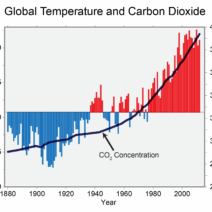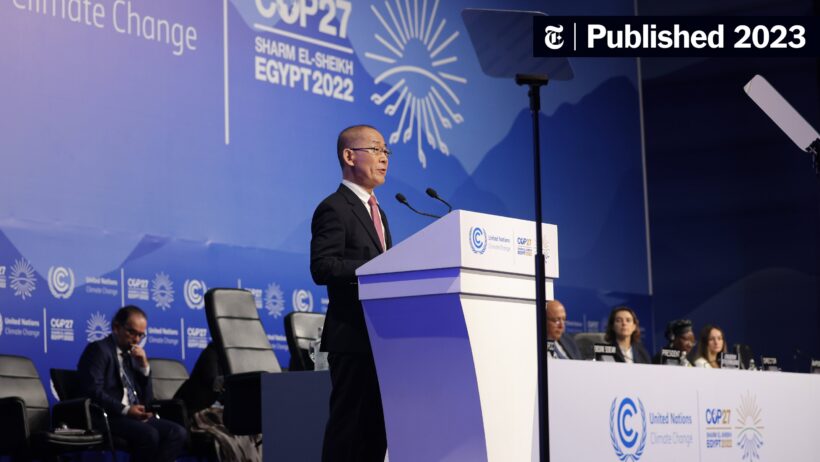As humanity stands at the precipice of an unprecedented crisis, the specter of global warming looms larger with every passing year. Governments, akin to the floundering captains of a ship caught in a storm, are attempting to navigate through turbulent waters. The question arises: Who is genuinely steering the vessel towards safety, and who merely paints the deck while the hull is breached? Let us delve into the complex interplay between governmental endeavors and the urgency of climate action.
Initially, it is essential to establish the scale of the challenge we face. The Earth’s climate is a delicate tapestry, intricately woven with the threads of biodiversity, weather patterns, and human activity. Each thread is significant; when one is frayed, the entire fabric threatens to unravel. The Intergovernmental Panel on Climate Change (IPCC), an oracle of climate science, has warned that humanity is perilously close to surpassing the critical global warming threshold of 1.5 degrees Celsius above pre-industrial levels. This point, once considered distant, is now in our imminent future, set to arrive by the early 2030s.
In the face of this existential challenge, various governments have unfurled their climate action plans like battle flags. These proclamations often tout commitments to reduce greenhouse gas emissions, transition to renewable energy sources, and increase climate resilience. Alas, the fervor of these declarations frequently crumbles beneath the weight of political inertia and corporate lobbying.
Take, for instance, the juxtaposition of rhetoric and reality seen in global climate summits. Nations convene, pledging to enact sweeping reforms while individual interest groups whisper sweet nothings, diluting the urgency of resolution. The Paris Agreement serves as a striking example of this dichotomy. While nearly every country committed to ambitious targets, the actual progress remains stymied by half-measures and loopholes. Emission reduction pledges often lack enforcement mechanisms, rendering them more akin to a wish list than actionable policy.
However, it is not all despondent. Some nations boldly venture into the environmental renaissance, setting a precedent for their peers. Countries like Sweden and Denmark exemplify innovative practices, exemplifying a true commitment to sustainability. With aggressive investments in wind and solar energy, coupled with tax incentives for green initiatives, these nations have become beacons of hope. Their proactive measures not only curb emissions but also stimulate economic growth through the creation of green jobs. It is a vivid illustration of climate action as a profound opportunity rather than an economic burden.
At the core of governmental effectiveness lies the principle of accountability. The citizenry holds the keys to the kingdom, etching their demands onto the public discourse. Activism flourishes, and social movements advocate for climate justice, embodying the collective will for transformative change. The youth, in particular, have harnessed their voices, organizing strikes and campaigns that resonate across borders. They challenge governments to fulfill their commitments, unmasking the hypocrisy that all too often masquerades as progress.
While grassroots movements ignite passion and challenge the status quo, the role of multinational corporations cannot be disregarded. These entities, often wielding more power and resources than small nations, play a pivotal role in shaping environmental policy. Governments frequently find themselves in the classic dilemma of prioritizing economic growth over ecological integrity. The fossil fuel industry, in particular, remains an entrenched adversary, with ceaseless lobbying efforts aimed at stifling regulatory measures. Thus, a conundrum emerges: can governments genuinely commit to climate action while remaining codified within an economic system that incentivizes destructiveness?
International cooperation is paramount to address global warming, yet it teeters on the edge of disillusionment. The climate crisis is indiscriminate, crossing geographical and political boundaries. Thus, collaborative strategies must transcend mere alliances. The interconnectedness of global supply chains and the transboundary nature of emissions necessitate a cohesive approach. Programs such as carbon trading and international climate funds showcase the potential for unity, yet they are often drowned beneath the cacophony of nationalist rhetoric.
Amidst the myriad of governmental strategies and challenges, it is crucial to recognize that solutions may lie outside traditional politics. Innovative technologies and grassroots ingenuity hold the potential to catalyze substantive change. From carbon capture and storage technologies to regenerative agriculture practices, the toolkit for combating climate change is expansive. Yet, for these innovations to flourish, supportive policies and funding must be channeled effectively through governmental frameworks.
As the climate crisis escalates, the need for bold leadership is more pressing than ever. Governments must shift from merely metaphorical gestures to pragmatic actions that confront the reality of the warming planet. The choices made today will resonate through generations to come, forging a path that either leads to a sustainable future or toward irreversible damage. The question remains: will governments rise to the occasion, fortifying their commitments, or will they succumb to the siren’s call of complacency?
In conclusion, as stewards of the Earth, governments must grapple not only with policy and regulation but also with the fervor of a populace demanding change. It is a tumultuous task, one that requires concerted action, unwavering resolve, and a profound commitment to the future of our planet. As all hands are needed on deck, it is time for every stakeholder—governments, corporations, and individuals—to navigate together towards a sustainable horizon.








